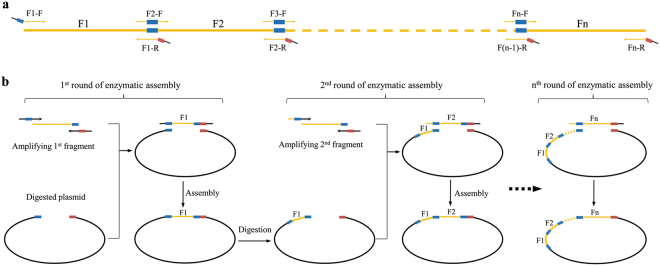Figure 1.
Schematic diagram illustrating the design of SSEA. The black line represents pLDR and orange represents the assembled DNA sequence. The thick short line shown in blue and red represents the 2 stitching sites which could be spliced together to regenerate a restriction site. (a) The assembled DNA sequence was divided into several fragments by stitching sites and the orange arrows represent the matching primers with overlapping. (b) After each round of PCR amplification, digestion, and assembly, the original restriction site is regenerated only once in the construct, which then serves as the assembly entrance for the next fragment. By iteration of these steps, a long DNA sequence can be cloned into a plasmid with high fidelity, but without introducing scar sequences.

